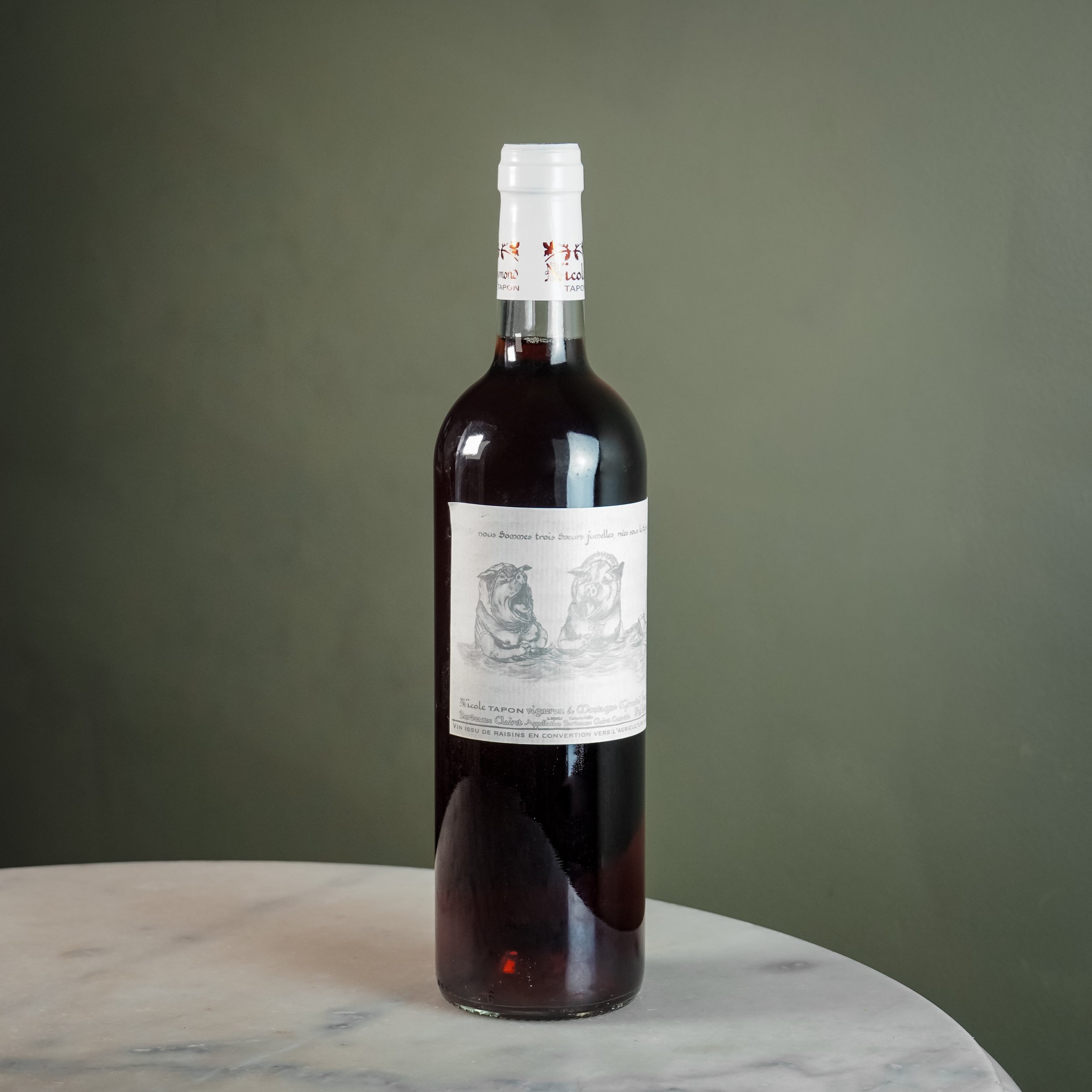Nicole Tapon
Saint-Emilion, Bordeaux, Franc
WHERE
Nicole Tapon
WHO
Diverse in style and geography
HOW
Jus de Raisin de Saint-Émilion-Grand-Cru (1 Litre)
Vin Blanc de Bordeaux « Hippocampe » Château Bellevue 2019 (W)
Vin Blanc de Bordeaux « Sirène » Château Bellevue 2009 (W)
Vin de France « Pink Tapon » Bonne Résille (Ro)
Clairet de Bordeaux « Pink Tapon » Cochons (Ro)
Clairet de Bordeaux « Pink Tapon » Pulli Pastus (Ro)
Saint-Georges-Saint-Émilion « Soutiens-George Gershwin » 2015 (R)
Saint-Georges-Saint-Émilion « Clos du Pavillon Saint-Georges » 2004 (R)
Saint-Émilion Grand Cru, Château Raymond-Tapon (R)
WINES
Nicole is the 16th generation of the Tapon family to make wine in Bordeaux’s iconic Saint-Émilion. Despite the region’s reputation for red wines, Nicole is best known for her ‘Clairet de Bordeaux’ -a rare style of deeply coloured, ageworthy, dry Rosé. During our visit in 2021, we tasted the 2018, 2013, 2010 and 2006 each wine provided a compelling, gastronomic experience that combined the best of mature Claret with a fragrant, fresh lift.
Nicole’s Red wines are diverse in style and geography and she follows a distinctly Burgundian structure to reflect the diversity of terroir, featuring her own name first rather than the multiple châteaux and parcels that she works with. Alongside the classic Merlot, Cabernet Sauvignon, and Sauvignon Blanc, Nicole works with Bouchet, Pressac and a range of ‘unauthorised’ varieties from vines planted before appellation laws restricted their planting.
Nicole’s 16 year old daughter, Aliénor, is already testing her hand at winemaking. Alongside school, she is involved in pruning, tasting and fermenting the wines. She also makes a special selection of Saint-Émilion musts that become an unfined, unfiltered, zero SO2, single-vintage grape juice: Hypp One.
“Men pass, the earth remains. The pride and emotion of working on this terroir remain intact. Our duty to preserve this unique and original place, of which we are only the custodians, is stronger than ever. Our ancestors have been present in Saint-Émilion since the 16th century.”









